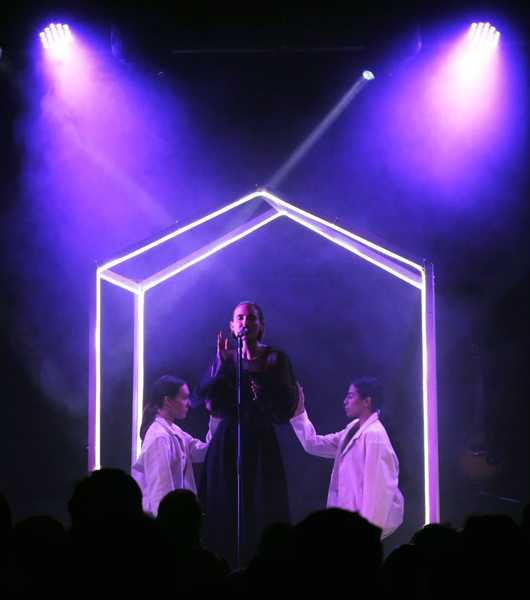ChamSys powers Woman’s Hour farewell
- Details

The band performed a farewell concert at The Dome in Tufnell Park, London, on Friday 22 March. Creating an appropriately ethereal vibe for the concert was a production concept that drew on simple, but impactful imagery, while it played with negative space. Created by David Howard, and based entirely on lighting, this design was controlled by a ChamSys MagicQ MQ80 console.
Forming the foundation of the band’s entire stage aesthetic was an illuminated structure of a house. The aim of the house was to provide a softly-lit space that the dancers and band could interact with, perform inside and use to show contrast and progression over the course of the show.
“Our light on the structure had to be continuous in appearance,” says Howard. “Research into technology that could achieve the required aesthetic was extensive. The concept actually came though many conversations with Fiona Burgess, Woman’s Hour singer. She loved the idea of an illuminated simplistic ‘fluorescent’ house structure as a set piece. This evolved into the statement house stage environment that eventually came to fruition for the show.”
Budget was always a factor in this design, according to Howard. “Initially I was brought on to the project to take the show though and make it work in the venue,” he says. “It was thought impossible to have custom elements like the house for this performance. However, with research and by working non-traditional technology, a cost effective and impactful lighting design was possible.”
Utilising The Dome’s in-house Chauvet Professional STRIKE 1, as well as Rogue R2 Wash fixtures, Howard juxtaposed diffused white illumination from the structure against unusual, yet carefully balanced, colour through heavy doses of haze. This added a dreamy, almost otherworldly aura to the stage.
Having performed at the venue on a previous tour, Howard was able to take a show file containing the in-house venue rig as a starting point for the foundation of his design. Using his ChamSys MagicQ MQ80 console, he easily adapted his design to the existing in-house lighting rig within the venue.
“The custom illuminated house structure was by nature something completely bespoke,” says Howard. “Using the ChamSys console made it easy to pre-program this element before it even existed. I was able to make a head file for the house structure that could be controlled intuitively in minutes. I like using technology to create something unique when and where this is possible. The ChamSys Head Editor and Fixture Creator have always made this process easy from a control side of things.”
(Jim Evans)
















